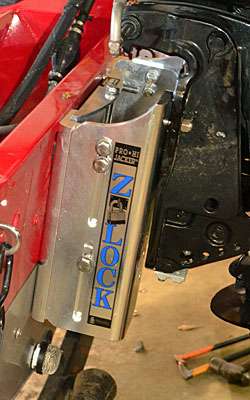
Note: To see photos of the jackplate install, click here.
Short of rearranging the load in your aluminum boat, there’s not a more cost-effective way of upping the all-around performance of it than adding a jackplate. However, before you go out and buy one, check your boat and motor’s warranty since an aftermarket plate might void them. If you’re good to go, read on.
A jackplate has several advantages. First of all, it allows you to move your motor up and down as well as backwards, known as setback. The advantage to setting back your motor is that the farther back from your transom it is, the “cleaner” the water is. In other words, as water rushes from under your transom, it’s all bubbly and stirred up. The farther back you go, the cleaner it is. This allows your prop to “grab” the water better, which offers better hole shot, handling and top end. Setback can also give you a better hole shot by increasing the mechanical advantage (like a fulcrum) the motor has on your boat. Explained another way, it has more leverage to put you on pad quicker.
Lastly, a jackplate can pick up or lower your motor. If you fish a stump-infested lake, you might want it picked up a bit. Picking the motor up also puts less of the lower unit in the water, which means less drag and better performance. aluminum
Just about every boat can benefit from a plate, including aluminum rigs like the author’s Triton X18 with a 115-horse Mercury Optimax ProXS. The boat performed better with a different prop, giving the rig better handling at high speed, a higher top end and no “porpoising” when cruising. Check out the photo gallery for a general overview of the install as well as before and after pictures. We installed a 6-inch setback T-H Marine Z-Lock manual plate to the X18 and saw improvements across the board. A manual plate was selected because it’s lighter and more affordable.




